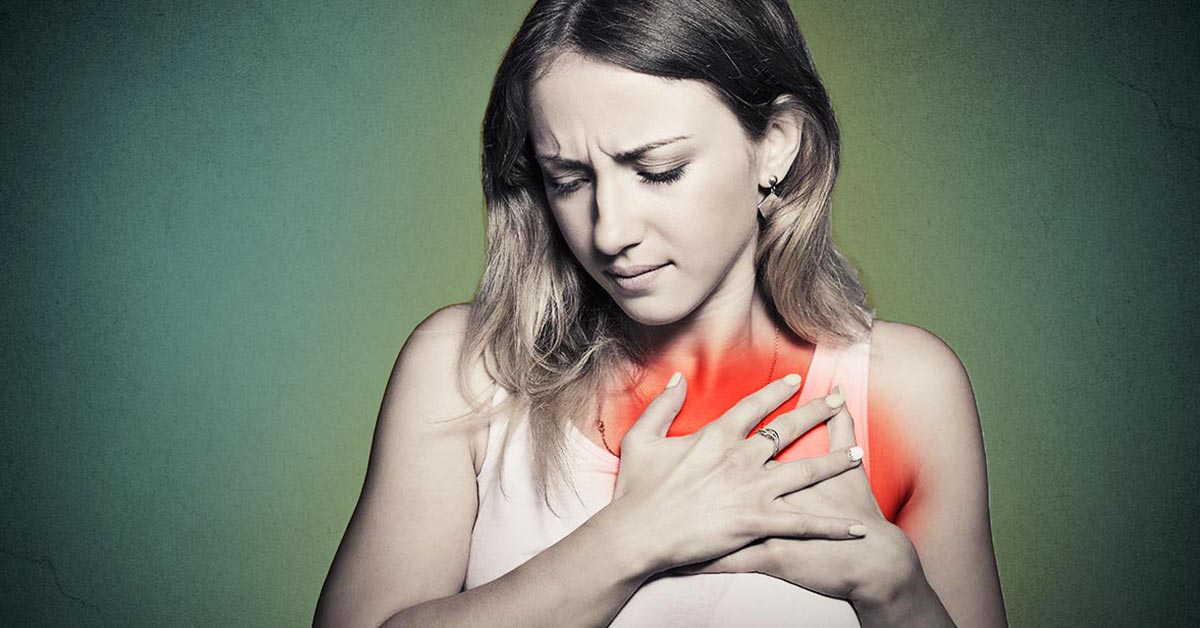Lower Your Risk for the No. 1 Killer of Women
- Category: Health & Wellness, Women's Health
- Posted On:
- Written By: Dr. Khawar Gul, MD

Heart disease is the leading cause of death for women in the United States. Heart disease does not discriminate between genders – around the same number of women and men die each year of heart disease in the United States. Some conditions and lifestyle choices increase a person’s chance for heart disease, including diabetes, being overweight and obesity, poor diet, physical inactivity and excessive alcohol use.
Also, high blood pressure, high LDL (low-density lipoprotein) cholesterol, and smoking are key risk factors for heart disease. LDL is considered the “bad” cholesterol because having high levels can lead to buildup in your arteries and result in heart disease and stroke. Controlling your blood pressure and cholesterol, not smoking, and regular physical activity will reduce your chances for heart disease.
Some women may feel no symptoms of heart disease. Other women have heavy sharp chest pain or discomfort. They could also feel pain in the neck, jaw or throat area, or pain the upper abdomen or back. Sometimes heart disease is called the silent killer, because it may not be diagnosed until more serious signs or symptoms appear, such as:
- Heart Attack: Chest pain or discomfort, upper back pain, indigestion, heartburn, nausea/vomiting, extreme fatigue, upper body discomfort, and shortness of breath.
- Arrhythmia: Fluttering feelings in the chest, chest pain, fainting or dizziness. Occurs when the electrical impulses in the heart don’t work properly.
- Heart Failure: Shortness of breath, fatigue, swelling of the feet/ankles/legs/abdomen.
- Stroke: Sudden weakness, paralysis (inability to move) or numbness of the face/arms/legs, especially on one side of the body.
- Remember: FAST, or Face drooping, Arm weakness, Speech difficulty and Time to call 911. Other symptoms may include confusion, trouble speaking or understanding speech, difficulty seeing in one or both eyes, shortness of breath, dizziness, loss of balance or coordination, loss of consciousness, or sudden and severe headache.
My advice to you as a cardiologist is not to ignore signs such as these. Take your health seriously. Heart disease is preventable, and there are a number of steps you can take to keep your heart healthy. You can decrease your chance of heart disease and heart attack by following these suggestions:
- Get Active – You’ve heard this before. Adults should try to be physically active at least 2.5 hours each week, or 150 minutes. That doesn’t mean you have to do that amount all in one day. Just make sure during the course of a week that you reach 150 minutes at a minimum. I make it a point to walk between LVMC and my office on Third Street when I am working, to keep myself active.
- Watch your diet – Make sure you are eating fruits, vegetables, whole grains and fat-free or low-fat milk and milk products. Decrease your amount of sodium (salt), saturated fats, cholesterol and sugars.
- Don’t smoke – If you smoke, quit now. Call 800-QUIT-NOW or 1-855-DÉJELO-YA (1-855-335-3569 for Spanish speakers) for help. There are many aps and websites that can help you with resources, coaching, plans and educational materials.
- Limit alcohol intake – excessive alcohol use can lead to health problems such as heart disease. Drink moderately. That generally means for healthy adults not to have more than one drink a day for women of all ages and men older than 65. For men age 65 and younger, two drinks daily is considered moderate.
- Learn your health history – see whether heart disease and stroke is part of your family health history. Knowing your risks is important.
Remember, Heart Disease is preventable. Do not become a statistic.






